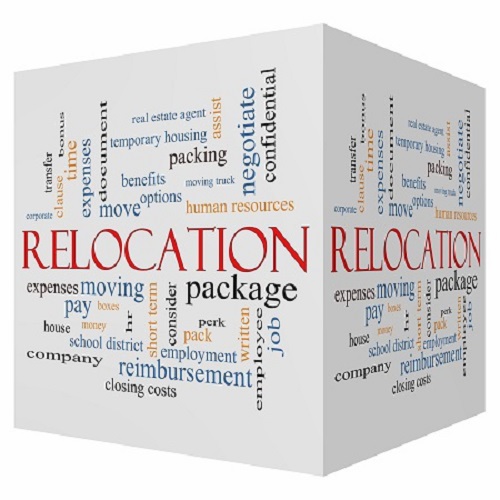August 22nd, 2022
Among the many changes brought about by COVID-19, the disruption to work arrangements and mobility patterns is perhaps the most profound.
Since 2020, companies of all shapes and sizes have decided to re-structure their workforce, implementing new working models and providing employees with previously unforeseen levels of mobility. This freedom has resulted in many of these employees re-structuring their lives, relocating to more affordable or personally preferable cities. Moreover, the increased implementation of remote and hybrid office-work models has changed the way employers and employees think about location, causing many workers to reassess the need to live close to major business centers.

Read the rest of this entry »
Tags: 2022, austin, Charlotte, colorado springs, dayton, decentralization, detroit, huntsville, kansas city, nashville, pittsburgh, remote work, sacramento
Posted in Company Relocation, Market Overviews, Office Space Forecasts and Trends | No Comments »
Add to: Del.icio.us | Digg
January 5th, 2021
 There are several types of office space in the USA. These properties are classified according to their quality standards and amenities, using the classification system developed by the Building Owners and Managers Association. This system establishes three main types of office space: Class A, Class B, and Class C. Here are the defining features of each Class:
There are several types of office space in the USA. These properties are classified according to their quality standards and amenities, using the classification system developed by the Building Owners and Managers Association. This system establishes three main types of office space: Class A, Class B, and Class C. Here are the defining features of each Class:
Class A Office Space
These properties are characterized as having the highest quality standards, amenities, and fixtures. Common features include top-tier HVAC and lighting systems, the latest telecommunications infrastructure, and often have unique design or architectural traits. Because of their high standards, Class A offices are typically (but not always) in new or trophy buildings with high-quality road and mass transit connections. Location also plays a role in Class A offices, as they are often located in sought-after areas such as Capitol Hill, Downtown Los Angeles, and The Loop in Chicago.
Class B Office Space
Class B properties are a middle-of-the-road option for office-based businesses. They are a step below Class A properties in terms of design, systems, and infrastructure, but they are still functional spaces that can accommodate a wide range of office operations. Depending on their location and potential, some Class B buildings are acquired by property management or investment firms and refurbished to Class A standards. Many of these offices are located in buildings that are between 10 and 20 years old.
Class C Office Space
Class C offices are typically located in older buildings (20 years+) outside of the CBD or other highly sought-after business areas. These properties may have outdated infrastructure, fixtures, and amenities, with some requiring partial renovation.
Read the rest of this entry »
Tags: Business Advice, Business Start Ups, Class A, Class B, Class C, Classification, office space options, Office-tips
Posted in Business Advice, Business Start Ups, Company Relocation, Office Talk | No Comments »
Add to: Del.icio.us | Digg
August 17th, 2015
 When a large corporation relocates to a new city or state due to needing larger business premises, a change in ownership or acquisition by another company, one of the most important aspects of the move will be planning the relocation of people and employees.
When a large corporation relocates to a new city or state due to needing larger business premises, a change in ownership or acquisition by another company, one of the most important aspects of the move will be planning the relocation of people and employees.
For the sake of fluidity and flexibility, relocation of employees should be planned well in advance of the actual relocation date. This is particularly important if the type of business is one that has an ongoing hourly process or production schedule.
As an example, an accounting business that processes client data on an hourly basis would need a relocation plan of action that insures the fastest move to the new location. In this type of production, a computer network expert should be a member of the relocation team to insure no serious disruption or breaches of data processing occurs. There is also a measure of expedient security of data to protect that should also be considered.
When moving to a new office or site, the move needs to be expedient, efficient and without data processing disruption. Relocation will need to be accomplished on a department by department basis, with planning down to the smallest detail of floor plans for computer networked equipment, as well as systems experts to disable and restart the systems. Computers were removed and reinstalled in a finely designed, almost military, regimental style.
Legalities and Best Practices for Relocating People and Employees
For large office relocation, there may be certain legalities with regard to relocating employees. These may be related to providing adequate information for housing and educational facilities for employees with spouses and children.
It’s up to the business owners to follow state guidelines on responsibility to employees regarding notification of relocation and advice on changes to employee tax status for out of state relocation.
Best practices for relocating people and employees is to consider engaging a professional relocation specialist with experience in business relocation. This may include a general personnel or high level management recruiter to assist employees who will not be relocating to the new site to find employment. Read the rest of this entry »
Tags: Company Relocation, Employee Rights
Posted in Companies, Company Relocation, Employee Rights, Employment and Worklife, Employment Regulations | No Comments »
Add to: Del.icio.us | Digg
April 13th, 2015
 When a company decides to relocate to a new location, whether they are an SME or a corporate giant, the relocation project can be complex. Whether a business relocates in-state, across the country or internationally, it requires a team of planners with diverse skills and experience to accomplish a smooth, seamless relocation process.
When a company decides to relocate to a new location, whether they are an SME or a corporate giant, the relocation project can be complex. Whether a business relocates in-state, across the country or internationally, it requires a team of planners with diverse skills and experience to accomplish a smooth, seamless relocation process.
In addition to the actual relocation planners involved, there are often additional teams of assistants that are required. These include:
- Personnel and human resources experts and recruiters
- Corporate legal advisers
- Real estate managers and supervisors
- Tax and/or CPA specialists
- Environmental consultants
These are a few of the teams needed to accomplish relocation with minimal disruption.
The size of a company will relate to the size of the relocation project and amount of planning. There is much less involved in relocating a law firm comprised of a half dozen employees than a research laboratory with two dozen research personnel and administrative associates.
Small to moderately sized offices are generally easier to relocate than manufacturing and retail facilities with several detached buildings in the facility’s complex. Read the rest of this entry »
Tags: Business Advice, Company Relocation, Office Organization
Posted in Business Advice, Company Relocation, Office Organization | No Comments »
Add to: Del.icio.us | Digg

 There are several types of office space in the USA. These properties are classified according to their quality standards and amenities, using the classification system developed by the
There are several types of office space in the USA. These properties are classified according to their quality standards and amenities, using the classification system developed by the 